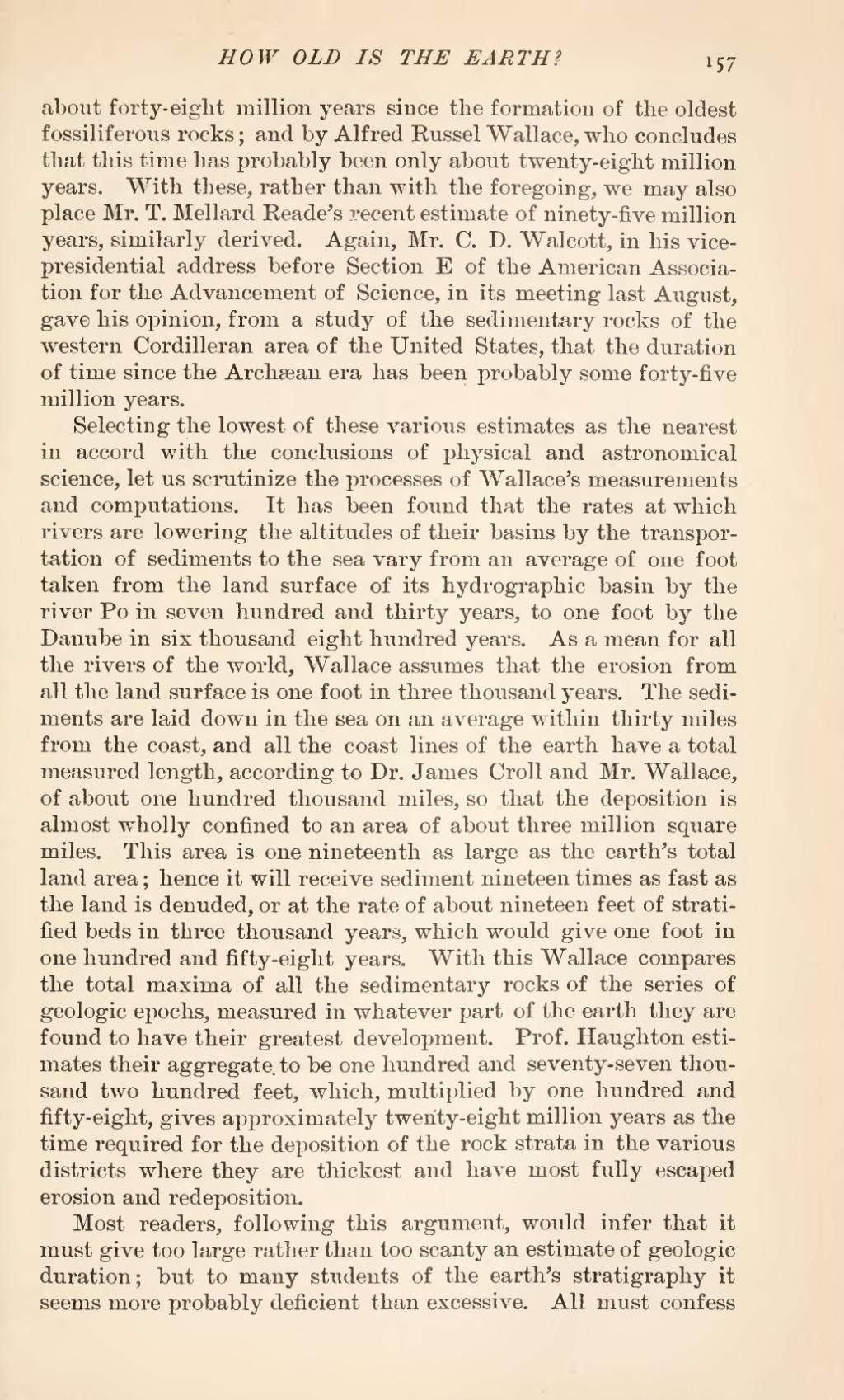about forty-eight million years since the formation of the oldest fossiliferous rocks; and by Alfred Russel Wallace, who concludes that this time has probably been only about twenty-eight million years. With these, rather than with the foregoing, we may also place Mr. T. Mellard Reade's recent estimate of ninety-five million years, similarly derived. Again, Mr. C. D. Walcott, in his vice-presidential address before Section E of the American Association for the Advancement of Science, in its meeting last August, gave his opinion, from a study of the sedimentary rocks of the western Cordilleran area of the United States, that the duration of time since the Archæan era has been probably some forty-five million years.
Selecting the lowest of these various estimates as the nearest in accord with the conclusions of physical and astronomical science, let us scrutinize the processes of Wallace's measurements and computations. It has been found that the rates at which rivers are lowering the altitudes of their basins by the transportation of sediments to the sea vary from an average of one foot taken from the land surface of its hydrographic basin by the river Po in seven hundred and thirty years, to one foot by the Danube in six thousand eight hundred years. As a mean for all the rivers of the world, Wallace assumes that the erosion from all the land surface is one foot in three thousand years. The sediments are laid down in the sea on an average within thirty miles from the coast, and all the coast lines of the earth have a total measured length, according to Dr. James Croll and Mr. Wallace, of about one hundred thousand miles, so that the deposition is almost wholly confined to an area of about three million square miles. This area is one nineteenth as large as the earth's total land area; hence it will receive sediment nineteen times as fast as the land is denuded, or at the rate of about nineteen feet of stratified beds in three thousand years, which would give one foot in one hundred and fifty-eight years. With this Wallace compares the total maxima of all the sedimentary rocks of the series of geologic epochs, measured in whatever part of the earth they are found to have their greatest development. Prof. Haughton estimates their aggregate to be one hundred and seventy-seven thousand two hundred feet, which, multiplied by one hundred and fifty-eight, gives approximately twenty-eight million years as the time required for the deposition of the rock strata in the various districts where they are thickest and have most fully escaped erosion and redeposition.
Most readers, following this argument, would infer that it must give too large rather than too scanty an estimate of geologic duration; but to many students of the earth's stratigraphy it seems more probably deficient than excessive. All must confess
